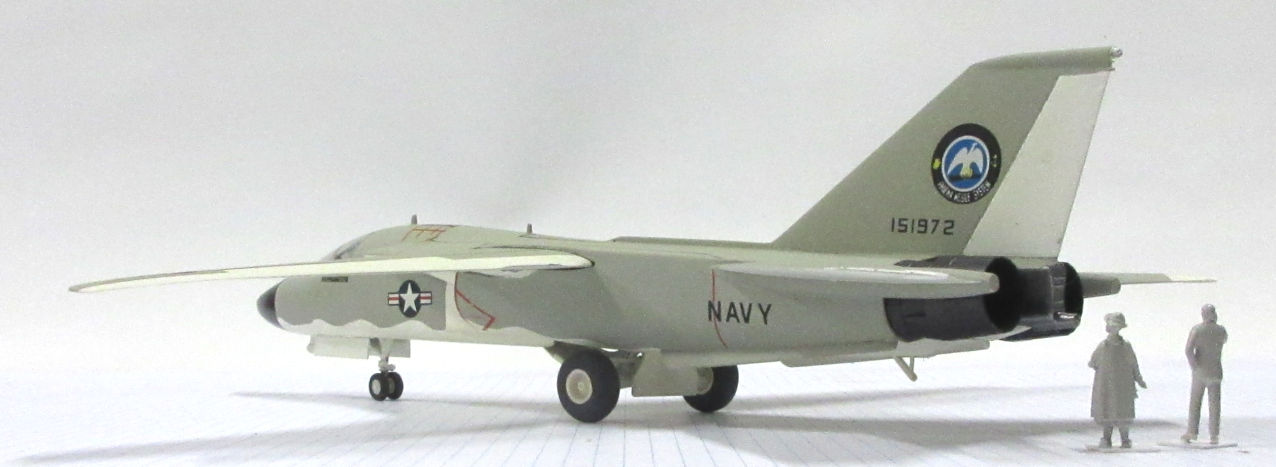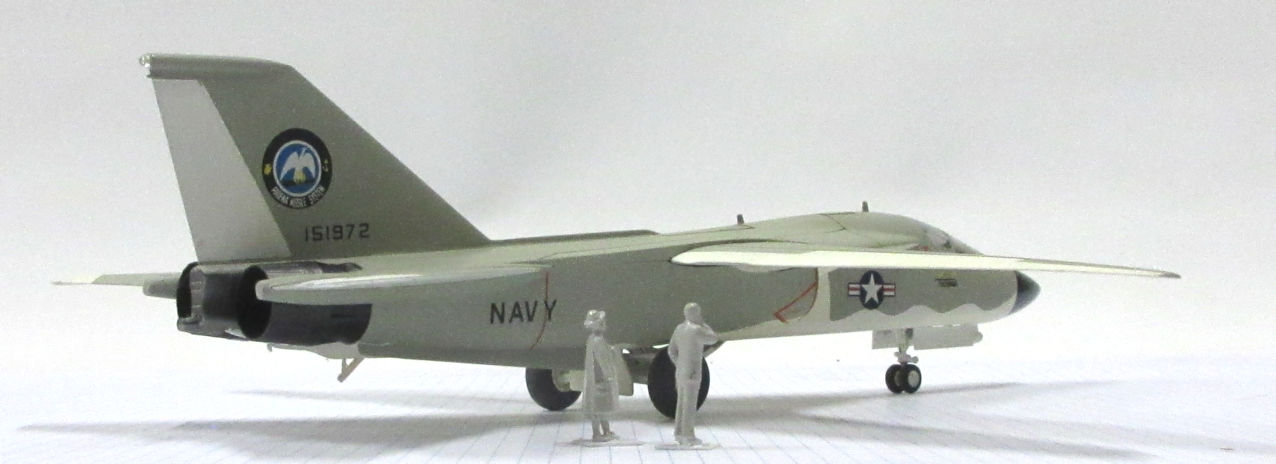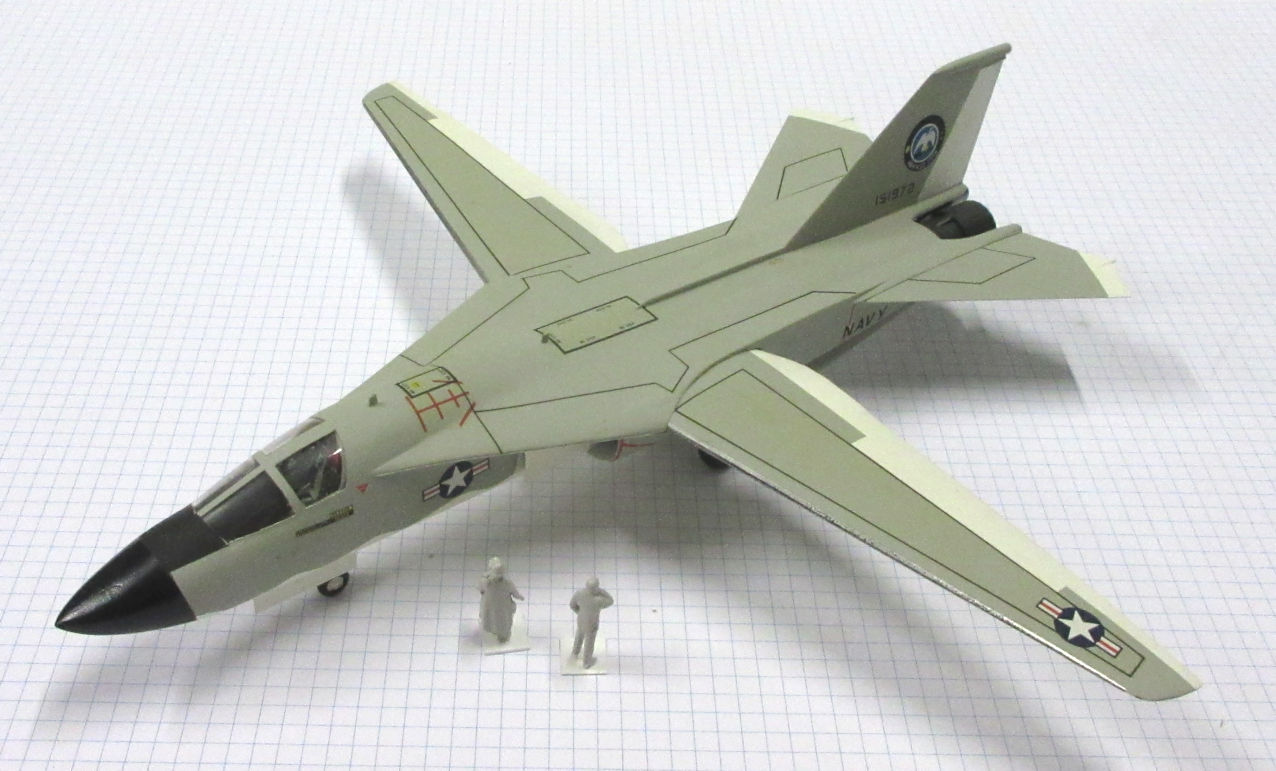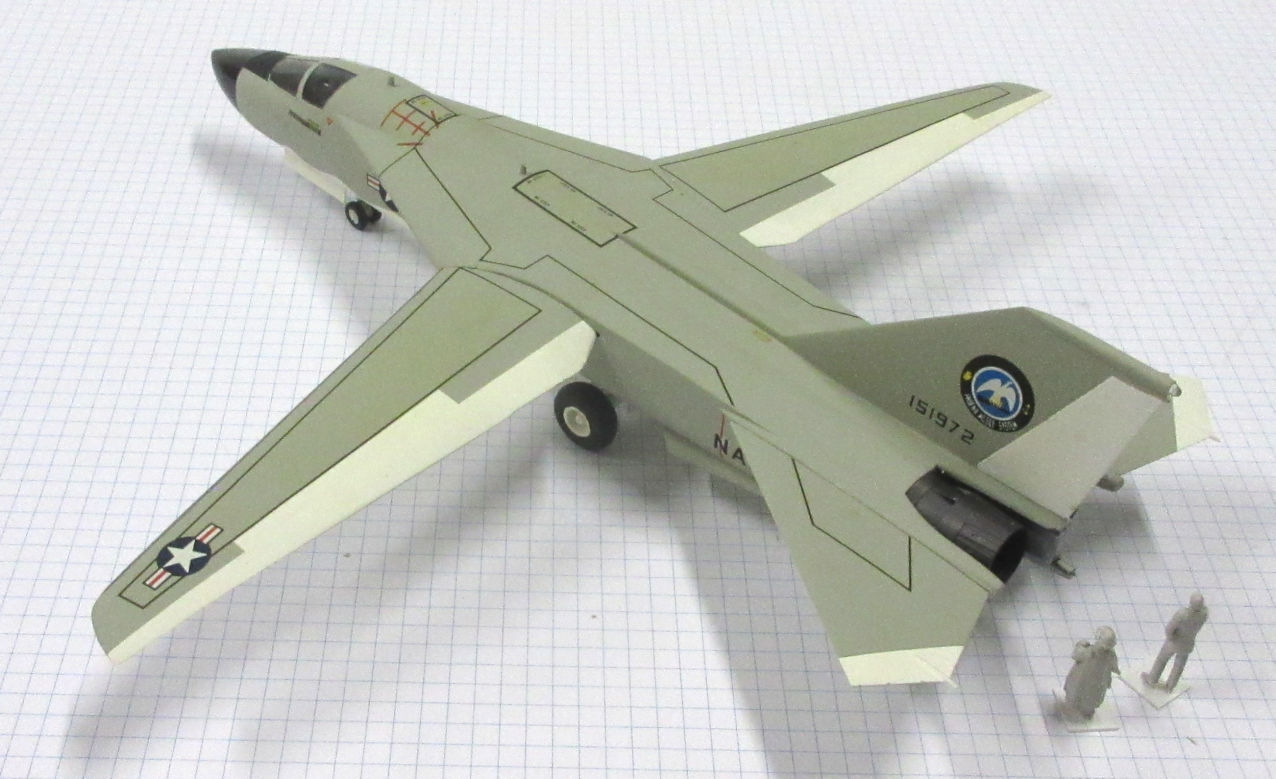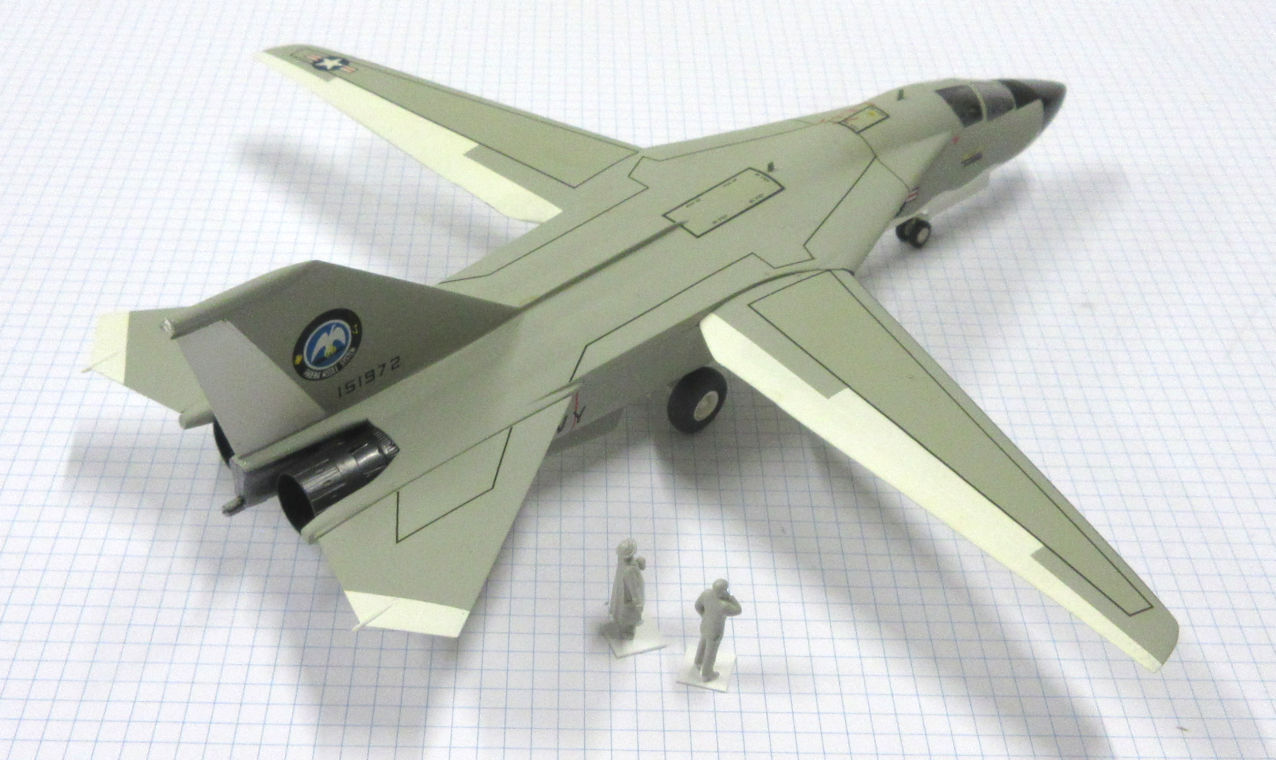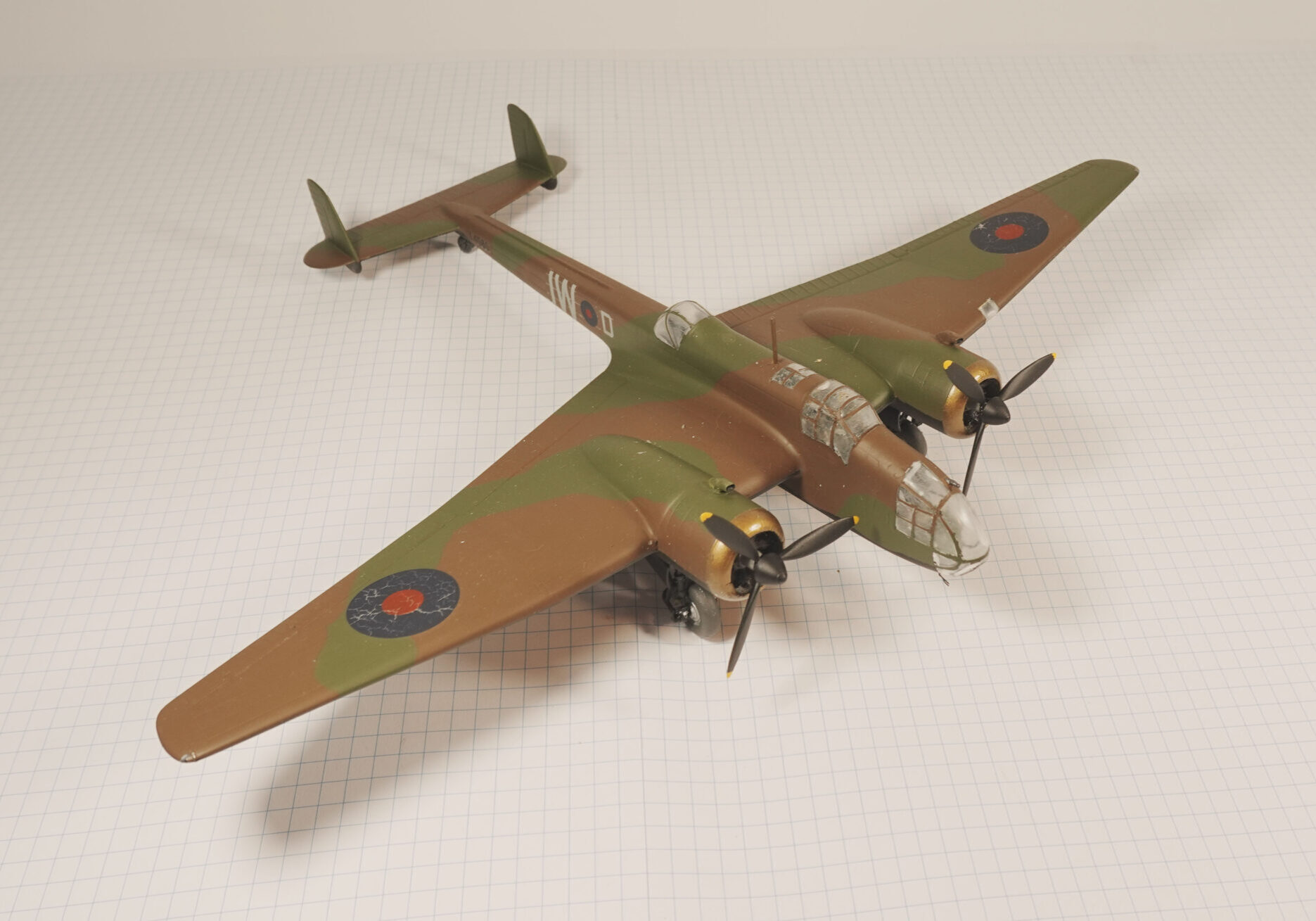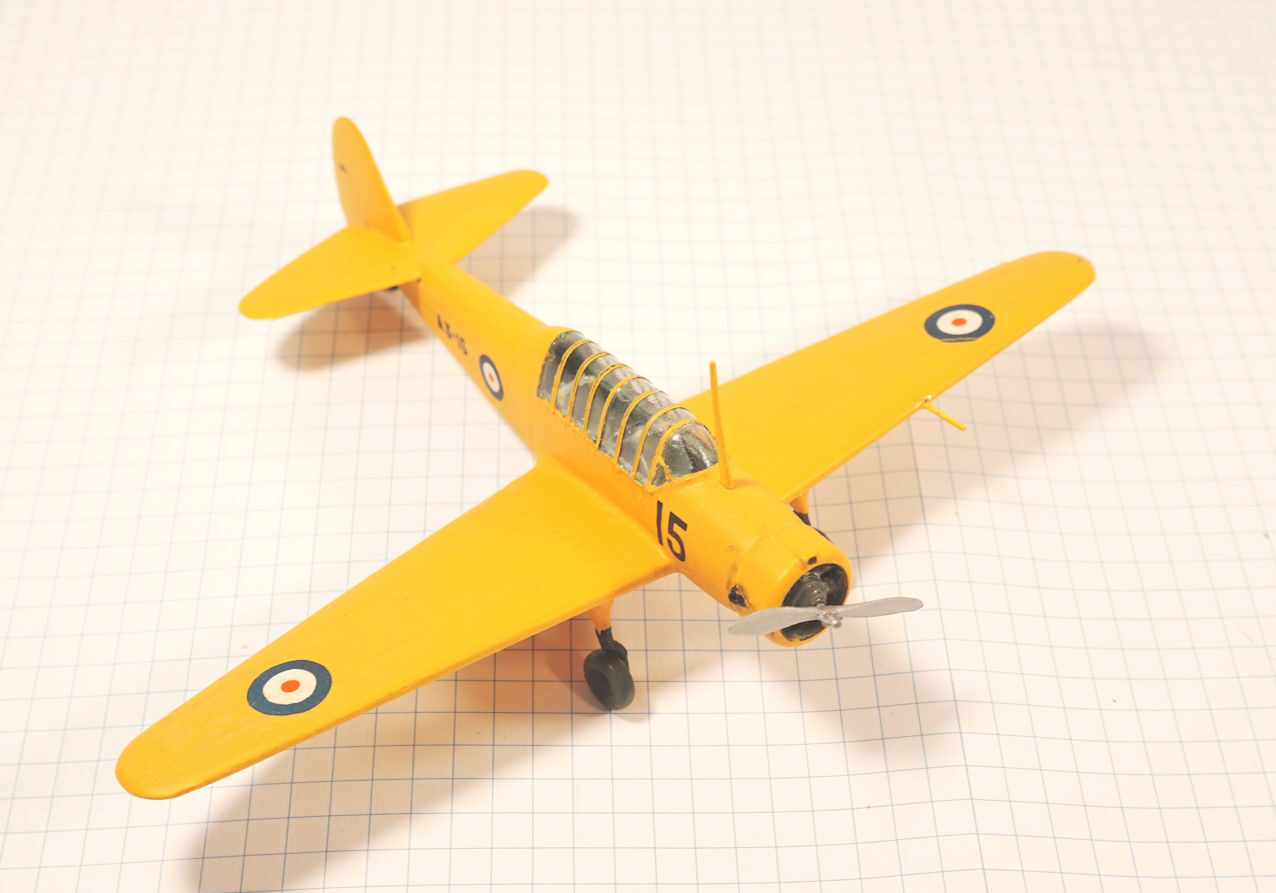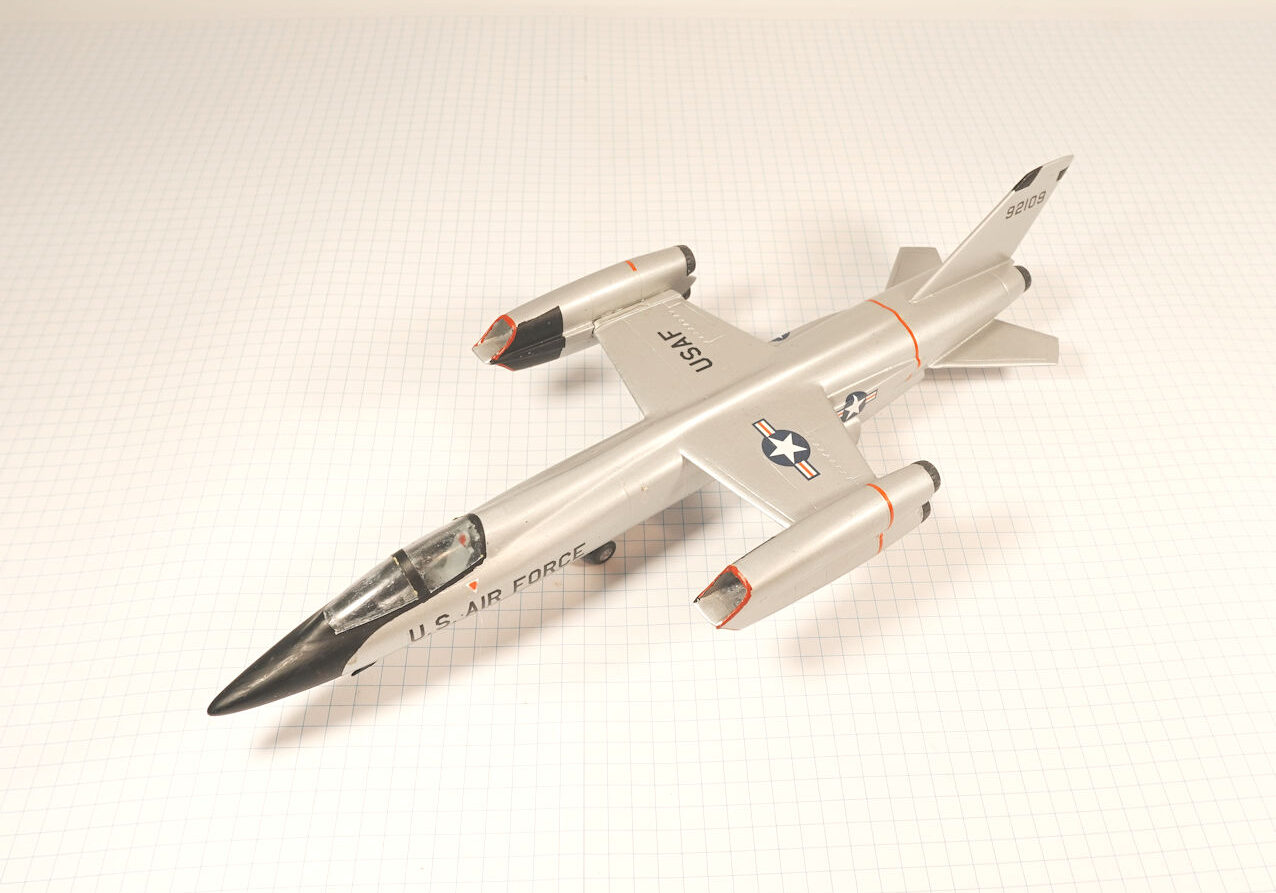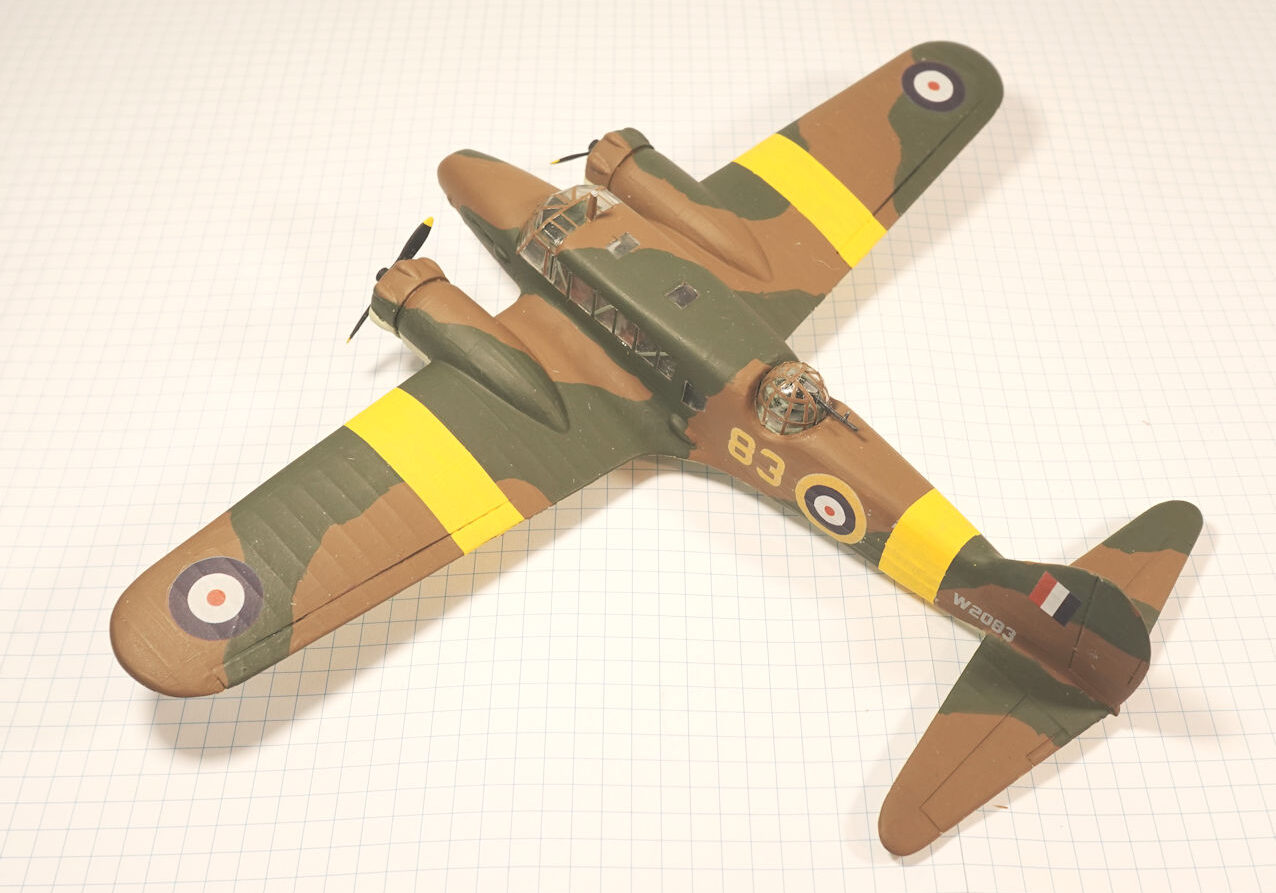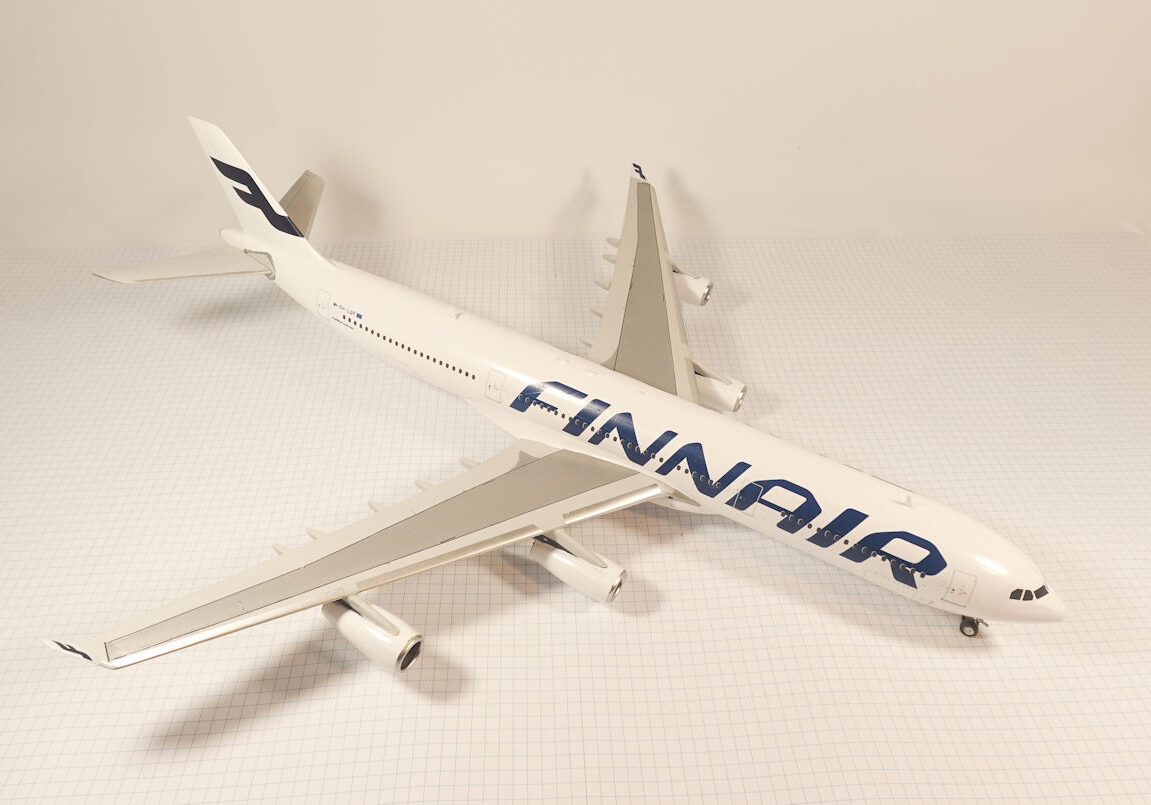History
The F-111 was the first variable geometry aeroplane to enter service and strongly influenced later designs. Development began in 1960, the first ones entered service in 1967 and 563 in all versions were produced.
The F-111 was originally designed as a multi-role aeroplane to meet the requirements of the US Air Force with the F-111A and US Navy requirements with the F-111B.
The Navy needed a fleet defence fighter armed with long range missiles but the compromises needed to develop this led to excessive weight problems and a lack of manoeuverability.
The project was cancelled in 1968 and only seven were delivered.
This model represents the third F-111B prototype, c.1967
Hasegawa 1/72 kit with Pete’s Hangar conversion set and decals and Microscale decals completed by Leigh Edmonds in September 2009.


